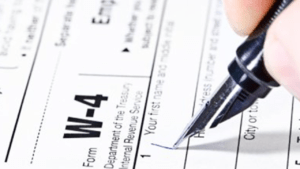Your brand’s reputation can vanish overnight from a single careless social media post. The damage to customer trust and loyalty can be devastating. PwC research shows that 65% of consumers will walk away from your brand after just one bad experience, which makes social media legal compliance crucial for your business today.
The risks to your company’s legal standing and reputation have never been higher. YouTube sees more than 500 hours of video uploads every minute, while Instagram processes 95 million posts daily. A single copyright violation could cost your business up to $150,000, and negative publicity spreads like wildfire across platforms to seriously hurt your brand value. This piece gets into the hidden legal threats on social media and shows you practical ways to protect your company’s reputation in 2025.
Common Social Media Legal Risks in 2025
Social media platforms have turned into hotbeds of legal issues that can seriously affect your business operations. You just need to understand these risks to protect your company’s interests in 2025.
Copyright violations
Your company could face hefty financial penalties when sharing content without proper permissions. Copyright infringement fines can go up to $150,000 per violation. This makes casual content sharing a costly mistake. Simple actions like using background music in promotional videos or reposting user content without clear permission can lead to legal troubles.
Recent cases show increased scrutiny of copyright violations. Twitter faced a lawsuit worth over $250 million from major music publishers. The stakes are high, and all three major U.S. record labels have taken legal action against companies that used their music without permission in social media content.
Privacy breaches
Privacy issues on social media go beyond basic data leaks. Your employees’ posts might accidentally expose confidential company information. To name just one example, see how lawyers filming office tours could unknowingly show client files, or healthcare workers following social media trends might reveal patient details in their backgrounds.
Data security breaches pose a serious threat. Criminals can use even small bits of information shared on social media platforms to steal identities and commit fraud. Social media platforms’ data collection methods have also raised questions about user consent and third-party information sharing.
Employee misconduct
Your business faces unique challenges from employee social media behavior. The law can hold your company responsible for your employees’ social media actions. You just need detailed guidelines and protocols. The biggest problem lies in finding the right balance between monitoring workplace activity and respecting employee privacy.
These risks are significant:
- Employees sharing confidential business information
- Posts that violate workplace harassment policies
- Content that damages company reputation
- Unauthorized disclosure of trade secrets
NLRB guidelines add more complexity. Your social media rules must protect employees’ rights to discuss workplace conditions. Broad rules against “disrespectful communication” might violate their protected rights to talk about workplace issues.
Social media misconduct outside work hours needs attention too. Courts now expect employers to handle serious social media misconduct, even when it happens after hours. This creates a delicate balance between employee privacy and workplace harmony.
You can minimize these risks with detailed social media governance policies that spell out:
- Acceptable use guidelines
- Content sharing protocols
- Privacy protection measures
- Consequences for policy violations
Note that social media policies should protect confidential information and coworker privacy instead of broadly limiting social media use. This focused approach helps you stay legally compliant while protecting your company’s interests.
How Legal Issues Damage Brand Reputation
Social media legal mistakes can destroy your company’s reputation. Recent studies show that poor social media management wastes resources and damages customer relationships.
Loss of customer trust
A single post or comment can spread like wildfire and turn into a PR nightmare. Research shows 65% of consumers no longer trust companies after data security incidents. More than 40% of users have deleted their social media accounts because they worry about how platforms handle their personal information.
Trust breaks down in several ways:
- Content that misleads or uses deceptive advertising
- Customer data that isn’t properly protected
- User-generated content that’s poorly managed
- Slow responses to privacy issues
About 48% of consumers blame brands when their ads show up next to inappropriate content. What’s worse, 47% believe the content next to advertisements shows what the company values and believes in.
Financial impact
Legal problems on social media cost way more than just lawyer fees. These financial hits can really hurt:
Data breach settlements reach massive amounts. Facebook had to pay $5 billion for breaking consumer privacy rules – the biggest privacy fine ever given worldwide. Equifax also had to shell out $425 million to people affected by their data breach.
Companies also face:
- Sales dropping as customer loyalty vanishes
- Market share shrinking from reputation damage
- Money wasted on crisis management
- Legal defense bills
- Costs to follow regulations
Data breaches now cost $4.24 million on average in 2021, with lost business making up almost 40% of that amount. These numbers show how reputation damage hits profits hard.
Social media liability has become crucial as one mistake can go viral and cause widespread problems. Without good legal advice, small errors in social media marketing can trigger serious legal and compliance issues.
Your brand’s reputation needs these protective steps:
- Create detailed risk management strategies
- Write clear social media policies
- Watch social channels actively
- Set up quick response plans for problems
Notwithstanding that, 54% of people don’t like companies tracking their purchases for marketing. Then 49% won’t give up their data privacy even to get personalized shopping. These numbers show the growing conflict between personalized marketing and privacy concerns.
Building trust through honest practices and actively protecting consumer interests works best. Companies should review their social media campaigns’ legal side to avoid expensive disputes and keep customer trust.
Key Social Media Laws for Businesses
Social media regulations create a complex maze that your business must navigate to avoid legal troubles. These laws keep changing as platforms evolve, making compliance crucial to keep your operations running smoothly.
Data protection regulations
The Data Protection Act (DPA) 2018 tells businesses exactly how they should handle personal data on social platforms. This law requires your organization to get clear permission before collecting user data through social features like “likes” or “follows”.
GDPR ranks among the world’s toughest privacy laws, with fines up to €20 million or 4% of global profits. Your business needs to make sure:
- Data collection stays legal and fair
- You process information with clear purpose
- You limit storage time
- Your records stay accurate
The California Consumer Privacy Act (CCPA) works like GDPR but protects U.S. consumers, especially from tech platforms that collect data. This law changes how social media companies gather and share user information from other websites.
Employment laws
The National Labor Relations Act lets employees talk about their workplace on social platforms. Your social media rules can’t stop workers from sharing details about:
- Pay and benefits
- Working conditions
- Group complaints about management
- Union-related activities
Many states now ban employers from asking for passwords to personal social media accounts. You can still watch social media use on company devices if you have clear policies.
Industry-specific rules
Each industry faces its own social media rules. Financial services must follow FINRA guidelines that require:
- Leaders to review social media sites before business use
- Keeping records for at least three years
- Watching interactive communications
Healthcare providers must stick to HIPAA rules to protect patient information on social channels. Schools must follow FERPA rules about sharing student information.
Government agencies must treat social media posts as public records under the Freedom of Information Act (FOIA). The Securities and Exchange Commission (SEC) watches financial firms’ social posts closely to stop fraud.
COPPA sets strict rules for platforms with users under 13. TikTok learned this lesson the hard way with a $5.70 million fine.
Australia’s new social media anti-trolling bill shows where regulations might go next. Platforms must now help victims of defamatory comments get information about who posted them. These changes worldwide show regulators are watching social media more closely.
Creating a Legal Risk Prevention Plan
Your business needs protection from social media legal pitfalls through a well-laid-out approach. A solid prevention plan shields you from reputation damage and helps avoid getting pricey litigation.
Risk assessment steps
Start with a full picture of your social media activities. This process involves:
- Spotting the biggest risks in your organization’s social media presence
- Measuring potential harm from each risk you find
- Looking at current policies and systems
- Recording findings and planning future assessment dates
Your assessment should look at both internal and external threats. Recent studies show unauthorized access to social accounts creates the most important security risks. Set clear protocols for account access and manage credentials carefully.
Policy development
A reliable social media policy guides your organization’s responsible platform use. Your policy should outline:
- Designated social media channels
- Staff responsibilities for content posting
- Content approval processes
- Response protocols for negative feedback
- Disciplinary measures for policy violations
Make sure your policy fits current regulations. The Federal Financial Institution Examination Council mandates that financial institutions maintain updated guidelines for social media activities of all types. While banks must follow this rule, it shows best practices for every industry.
Employee training needs
Training stands as the life-blood of risk prevention that works. Studies show employees might post inappropriate content, break privacy laws, or expose confidential information without proper training.
Essential training components include:
- Social media policy comprehension
- Legal compliance requirements
- Privacy protection protocols
- Crisis response procedures
- Platform-specific guidelines
Build specialized training programs based on employee roles. Marketing teams need different guidance than customer service representatives. Run at least 2-3 different training sessions to cover various aspects of social media management.
Platform and regulation changes demand regular updates. Schedule refresher courses when major changes happen to social media or company policies. This continuous education keeps you compliant and reduces legal risks.
These practical elements should be part of your training:
- Ground case studies of social media mistakes
- Interactive sessions on content creation guidelines
- Hands-on practice with approved posting procedures
- Security protocols for account access
- Documentation requirements for social media activities
Note that training documentation helps defend against potential legal disputes. Keep detailed records of all training sessions, including attendance, content covered, and assessment results.
Real Cases of Social Media Legal Disasters
Social media mistakes can lead to devastating legal consequences. Privacy breaches and employee misconduct cases remind us why proper social media management matters so much.
Major company lawsuits
Legal battles over social media keep growing. February 2025 data shows 1,246 lawsuits pending in multidistrict litigation. Meta now faces hundreds of legal claims from parents whose children developed mental health problems after using Facebook and Instagram.
A landmark case saw more than 200 school districts sue major social media companies over the youth mental health crisis. These platforms allegedly designed addictive products that harm mental health and targeted youth during their vulnerable developmental stages.
West Coast Mazda’s case stands out in employment law. The company fired employees over Facebook posts they deemed ‘offensive, insulting and disrespectful.’ British Columbia’s Labor Relations Board backed this decision, which showed how social media insubordination can damage a company’s reputation.
Financial losses
Social media legal disasters hit companies hard financially. These major cases tell the story:
- Meta paid an unprecedented USD 5 billion fine for consumer privacy violations
- Equifax settled their data breach for USD 425 million
- Social media scams led to USD 2.70 billion in reported losses since 2021
Allied Concrete Co.’s case proved especially costly. The deletion of Facebook evidence led to USD 722,000 in penalties against the plaintiff and their attorney. Companies also suffer extensive reputation damage that leads to lost customers and lower market value.
Recovery strategies
Companies can bounce back from social media legal disasters through reliable strategies.
A reliable risk management system comes first. This needs clear social media policies that cover all communication aspects. Companies also need reliable monitoring systems to catch problems before they become crises.
Success in recovery needs:
- Quick removal of problem content
- Open communication about fixes
- Better employee training programs
- Stronger privacy protection
The Federal Trade Commission stresses that companies must back up their social media claims to avoid legal trouble. Businesses also need proper attribution for third-party content and clear consent records for personal information.
Social media regulation keeps getting stricter. California now requires social media companies to add better safety measures for users under 18. This shows where things are headed. Companies need strong legal compliance systems to survive in this new landscape.
Conclusion
Social media legal risks can devastate your business if you don’t act now. These platforms give you amazing marketing opportunities, but one wrong move could trigger financial and reputational damage. Just look at Meta’s $5 billion fine – a harsh lesson about what happens when compliance goes wrong.
Legal challenges will only get tougher through 2025 and beyond. Your business needs resilient infrastructure with detailed policies, regular staff training, and proactive risk checks. Stricter rules, privacy issues, and public scrutiny have made social media management trickier than ever.
It’s worth mentioning that prevention costs nowhere near as much as damage control. Your first steps should include clear social media rules, content approval systems, and proper documentation of all platform activities. These basic measures help protect your company from serious legal troubles.
Your compliance strategy must evolve faster as social media laws keep changing. A careful plan and consistent monitoring help you run an effective social media presence. This approach safeguards your brand’s reputation and financial health while you retain control of your digital footprint.










![The Ultimate Guide to Diversity and Inclusion in the Workplace [2025 Edition]](https://gamedayhr.com/wp-content/uploads/2025/02/christina-wocintechchat-com-FPQlXQtjkqU-unsplash-scaled.jpg)



